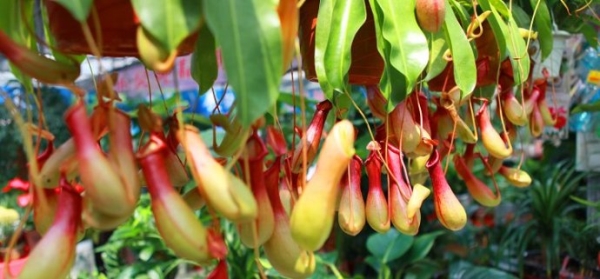Planting method of zedoary turmeric
Zedoary turmeric, also known as turmeric, is a commonly used traditional Chinese medicine, and in some places it is also called turmeric and black ginger. In China, it is mainly produced in Taiwan, Fujian, Jiangsu, Guangdong, Guangxi and other places. It has the functions of breaking blood, promoting qi, relieving pain, digestion and accumulation. At the same time, it is mainly used to treat qi and blood stagnation, heartache, persistent food, amenorrhea of blood stasis and so on. So how is zedoary grown? Today, let's learn how to grow zedoary turmeric.

1. Fine farming
Zedoary turmeric has very strict requirements on the growth environment, so the selection and rectification of the planting site also need to be very meticulous. Generally, the soil should be relatively deep, close to the water source, easy to irrigate and drain, loose on the soil, not easy to accumulate water, but the soil is moist, sunny and fertile, and should not be planted in clay. Apply sufficient barnyard manure or compost, turn the soil deeply, mix fertilizer and soil, fine soil, make the border, and smooth the border surface.
2. Methods of reproduction
The planting time of zedoary is related to its variety and the climatic conditions of the planting place. Generally speaking, zedoary is planted in May and June, while warm zedoary is planted in April, and it is usually planted in February in Guangxi. The way of propagation of Rhizoma Curcumae is generally to use rhizome propagation, we need to select good tubers in winter, and the tubers will be treated with plant ash. Wait until the time of sowing, put the tubers according to the row spacing of 30 cm and the plant spacing of 25 cm, cover a layer of fine soil, and then cover the top with a film, which can improve the seedling emergence rate.
3. Field management
About 15 to 20 days after planting, we will check the emergence of zedoary turmeric. Under normal circumstances, zedoary will break through the plastic film on its own, but there are also special circumstances, so it needs artificial help to break the membrane so as not to affect the growth of zedoary seedlings. During the growth period of Rhizoma Curcumae, we should check the humidity in the field and water and drain reasonably to avoid death and root rot. After the seedlings come out, we will carry out a ploughing and weeding, and top dressing for the first time, mainly watering with feces and urine. Wait until 20 days later to topdressing again, or with feces and urine water application, while in the later stage is basically once a month and a half to apply fertilizer.
4. Disease and pest control
There are still many diseases and insect pests of zedoary, so we should take good care of them in the process of planting. Among them, the main diseases are root rot and leaf spot, and the peak of these diseases is usually in June and July when it is high temperature and rainy. We need to use 1000-fold solution of Bacterin wettable powder and mancozeb to control. Secondly, the pests such as ground tiger, grub and ginger butterfly also do great harm to zedoary. Ground tiger and grub can be poisoned by trichlorfon and trapped by black light. Ginger butterflies are usually artificially dewormed, or sprayed with trichlorfon and dichlorvos.
The above is the full introduction of the planting method of zedoary turmeric. Because zedoary turmeric has higher requirements on the planting environment, and diseases and insect pests occur frequently, then we need to firmly grasp its growth habits, scientific fertilization, watering, weeding and later management, so that the planting can be successful.
- Prev

Can pitcher plants be raised indoors?
If there are children and the elderly at home, they may mistakenly eat pitcher plants, and the branches and leaves of pitcher plants are highly toxic, so it is best not to breed them indoors. And pitcher plants give off an unpleasant stench when they bloom, and breeding in the bedroom gives off an unpleasant smell, affecting healthy sleep. But if florists love pitcher plants very much
- Next

Maintenance methods of Castanopsis carlesii
Soil and temperature can not only use peat soil, water moss, but also use peat soil, river sand, perlite mixed soil, it can be said that the requirement of soil is not very high. The suitable temperature for the growth of Castanopsis thunbergii is generally 15 ℃-25 ℃, which is not suitable for overcold or overheated environment.
Related
- Fuxing push coffee new agricultural production and marketing class: lack of small-scale processing plants
- Jujube rice field leisure farm deep ploughing Yilan for five years to create a space for organic food and play
- Nongyu Farm-A trial of organic papaya for brave women with advanced technology
- Four points for attention in the prevention and control of diseases and insect pests of edible fungi
- How to add nutrient solution to Edible Fungi
- Is there any good way to control edible fungus mites?
- Open Inoculation Technology of Edible Fungi
- Is there any clever way to use fertilizer for edible fungus in winter?
- What agents are used to kill the pathogens of edible fungi in the mushroom shed?
- Rapid drying of Edible Fungi

